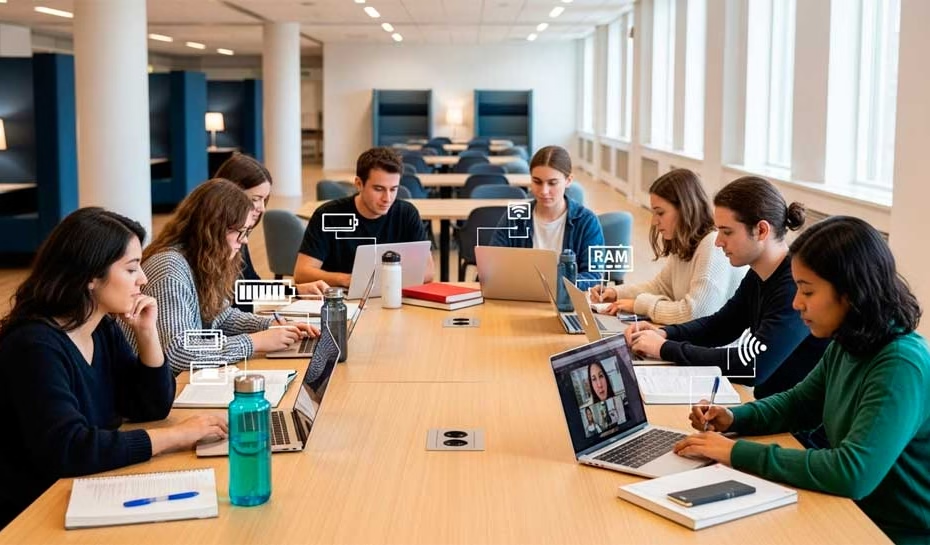Choosing the right laptops for students in 2025 isn’t a “nice optimization” anymore — it’s the difference between a smooth semester and a constant tech headache. If your laptop is slow, heavy, or dies in the middle of a three-hour lecture, it doesn’t just annoy you; it can mean missed deadlines, lost notes, and a lot of unnecessary stress.
The good news: you don’t need to obsess over every spec. With a bit of clarity about what you actually do — note taking, remote learning, CS projects, design work, or just getting through essays and spreadsheets — you can pick a machine that fits your needs and your budget.
This guide breaks down what really matters in laptops for students, plus concrete picks for:
- Laptops for note taking and all-day classes
- Laptops for remote learning and hybrid study
- Laptops for CS students, engineering and design majors
- Best laptops for students on a budget (including best laptops for students under 30000 in local currencies)
- Where to look for free laptops for homeschool students and laptop loan for students by government programs
1. The specs that matter (and the ones you can ignore)
Think of a student laptop as four main pillars: performance, memory, storage, and battery. Everything else (RGB, ultra-high refresh rate, etc.) is a bonus, not a priority.
CPU & GPU: enough power without burning battery
For most students, you don’t need a gaming beast. Modern “mid-range” chips are already very fast:
- Intel Core Ultra 5 / Ultra 7
- AMD Ryzen 7xxx / 8xxx U-series (for thin & light laptops)
- Apple M3 / M4 in MacBook Air / MacBook Pro
These are more than enough for:
- Office apps, browsers, and note apps
- Research with dozens of tabs
- Light photo/video editing
- Occasional coding and data analysis
You only really need stronger CPU/GPU if you’re in:
- Computer Science / Software Engineering: compiling large projects, using Docker, running virtual machines.
- Engineering / Architecture: AutoCAD, SolidWorks, simulations.
- Design / Media: Adobe Creative Cloud, Blender, DaVinci Resolve.
In those cases, look for:
- Higher-tier CPU (Core Ultra 7, Ryzen 7/9, Apple M3 Pro/M4)
- Integrated graphics of the latest generations (Intel Xe, AMD RDNA-based iGPU, Apple M-series) or an entry dedicated GPU (RTX 4050, etc.) if your software recommends it.
RAM: 16 GB is the new normal
- 16 GB RAM – Recommended baseline for 2025. Multitasks well, supports heavier browsers, IDEs, and apps.
- 8 GB RAM – Acceptable only for Chromebooks or very basic Windows use (notes, web, streaming). You’ll outgrow it quickly if you’re a power user.
- 32 GB RAM – Ideal for laptops for cs students doing heavy dev work, engineering simulations, or big creative projects.
If the RAM is soldered (common in thin laptops), buy what you’ll need for the next 3–4 years from day one.
Storage: don’t suffer with 128 GB
- 512 GB SSD – Sweet spot for most students. Plenty of space for documents, apps, and some media.
- 1 TB SSD – Great if you store videos, large datasets, game libraries, or use multiple virtual machines.
- 256 GB SSD / 128 GB eMMC – Only acceptable in budget or ChromeOS machines with heavy cloud use. You’ll need good cloud management.
Always prefer an SSD over HDD — it’s non-negotiable for boot speed and overall responsiveness.
Battery life: real-world 10–15 hours
On paper, everyone promises “all-day battery”. In practice, look for reviews that test web browsing and video playback:
- A good student laptop should comfortably last 10–15 hours of mixed use.
- Apple’s MacBook Air M2/M3/M4 and some modern OLED ultraportables regularly hit that mark in independent tests.
- If you’re in labs or studios with few outlets, battery life should be a top-3 priority, not an afterthought.
2. Size, weight, and durability: built for campus life
You’re likely carrying this machine:
- From home to campus
- Across multiple classrooms
- To the library, cafés, or a part-time job
For that daily routine, the ideal range is:
- 13″–14″ display, under 1.4 kg / 3.1 lb – Perfect balance between portability and workspace.
- 15″–16″ display – Better if you do a lot of content creation, CAD, or coding—but usually heavier.
For durability:
- Aluminum or magnesium chassis generally outlast cheap plastic.
- Pay attention to hinge quality and flex in the keyboard deck (hands-on reviews help).
- A slightly sturdier build is worth a few extra grams if you commute daily.
3. Connectivity: crucial for laptops for remote learning
If you take online classes, attend hybrid lectures, or often present, connectivity can make or break your experience.
For laptops for remote learning, prioritize:
- Webcam: Aim for 1080p. Many 2025 models have upgraded from 720p and support better low-light processing.
- Microphone: Dual-mic arrays with noise reduction help you sound clear in Zoom/Teams/Meet.
- Wi-Fi 6 or Wi-Fi 6E: More stable, better in crowded networks (dorms, campuses).
Ports:
- At least 2× USB-C (preferably with charging + DisplayPort).
- HDMI or USB-C video out for projectors and external monitors.
- A headphone jack is still very useful in lecture halls.
Adapters and docks help, but students benefit from having essential ports built in.
4. Laptops for note taking and all-day classes
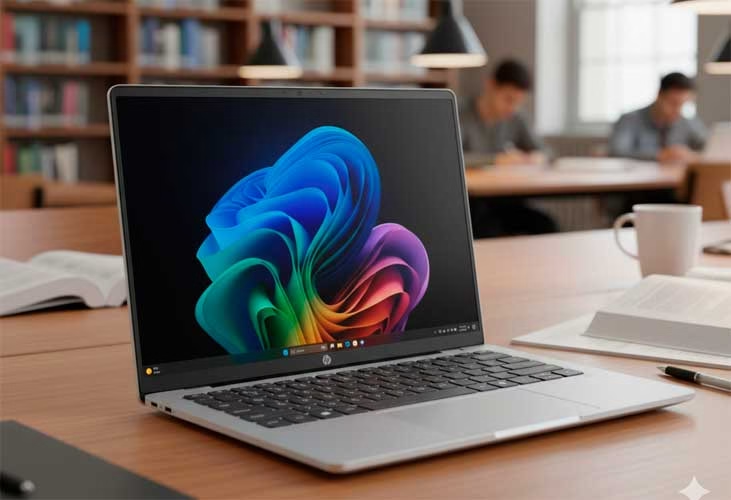
Not everyone needs a workstation. If your life is mostly:
- Slides, PDFs, and textbooks
- Writing essays and reports
- Online research and light spreadsheets
…you’re the perfect target for lightweight, efficient laptops for note taking.
When a 2-in-1 convertible makes sense
If you like handwritten notes, mind maps, or annotating PDFs with a stylus, a 2-in-1 is a game changer:
Look for:
- Active stylus support (not generic capacitive pens)
- Palm rejection and low latency for natural writing
- Instant wake and tablet mode that’s comfortable to hold
Types of students who benefit most:
- Medicine, nursing, biology, or law students who annotate a ton of PDFs
- Visual thinkers who sketch diagrams, flows, and quick charts
- Anyone who replaces a paper notebook with OneNote, Notability, GoodNotes, etc.
When a classic laptop is a better choice
If you mostly type — essays, reports, coding, emails — prioritize:
- Great keyboard with good travel and layout
- Responsive trackpad, ideally glass-covered
- Comfortable palm rest for long sessions
Models like MacBook Air are often praised as reference points for keyboards/trackpads in the ultraportable segment. For Windows, many premium ultrabooks have caught up.
5. Laptops for CS students, engineering, and design majors
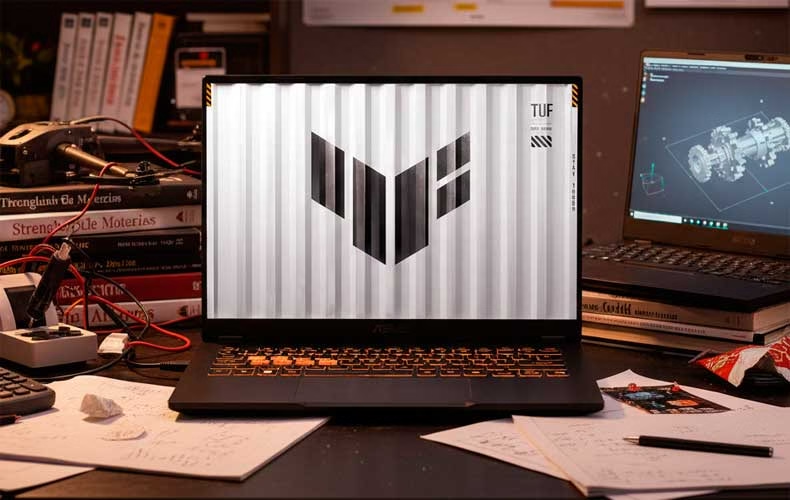
For laptops for cs students and technical fields, the conversation changes a bit. Raw power and memory start to matter more.
Minimum useful spec targets
If you’re in CS, engineering, data, or design, here’s a solid baseline to aim for:
- CPU: Intel Core Ultra 5/7, AMD Ryzen 7 U/H, or Apple M3/M4
- RAM:
- 16 GB – minimal acceptable for multi-IDE, Docker, and databases
- 32 GB – ideal for heavy VMs, large datasets, CAD, or Adobe work
- Storage: At least 512 GB SSD, ideally 1 TB
- GPU:
- Modern integrated graphics often handle light CAD and creative work.
- For 3D, complex CAD, or GPU-accelerated rendering, consider a laptop with a dedicated GPU (e.g., NVIDIA RTX 4050/4060 in a thin chassis).
macOS vs. Windows vs. Linux for technical majors
- macOS on Apple Silicon (M3/M4)
- Fantastic performance per watt and battery life.
- Great for programming, data science, design, and creative apps.
- For Windows-only tools (some CAD/CAE, proprietary lab software), you may rely on:
- Campus Windows labs
- Remote desktop into a Windows machine
- Cloud-based solutions, where available
- Windows on Intel/AMD
- Safest for specialized engineering tools and many legacy apps.
- Works great with WSL (Windows Subsystem for Linux) for a Unix-like dev environment.
- Linux / dual boot / WSL
- For pure CS and backend dev, Linux or WSL is excellent for compilers, Docker, and CLI tools.
- Check with your university if they use any Windows/macOS-only software before committing to a Linux-only machine.
6. Best laptops for students on a budget
You don’t have to overspend to get a good machine. The key is knowing what to compromise and what not to touch.
Under $500 (entry level)
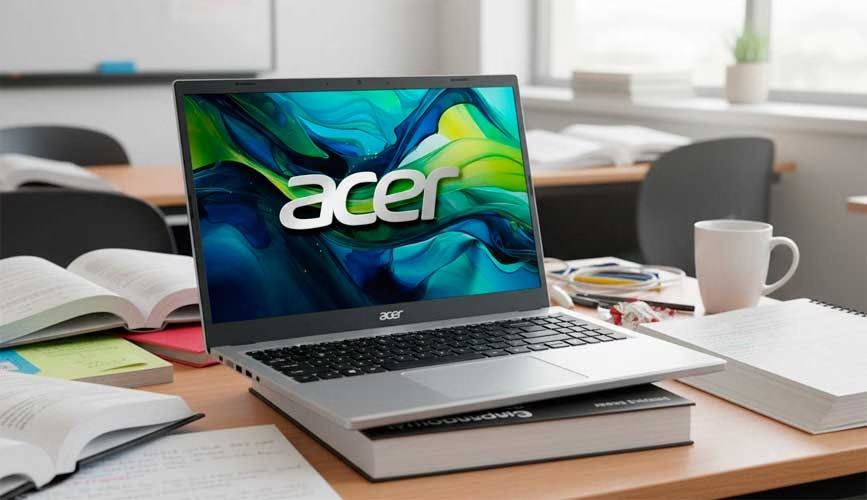
Great for:
- Writing, research, basic spreadsheets
- Video calls and streaming
- Google Workspace or Microsoft 365 online
Look for:
- Chromebooks or basic Windows laptops
- 8 GB RAM minimum
- 128–256 GB storage (SSD or fast eMMC on Chromebook)
- 1080p display if possible (text is much nicer to read)
- 720p or 1080p webcam for online classes
Chromebooks shine here, because ChromeOS is light and optimized for modest hardware.
Around $700–$800: the value sweet spot
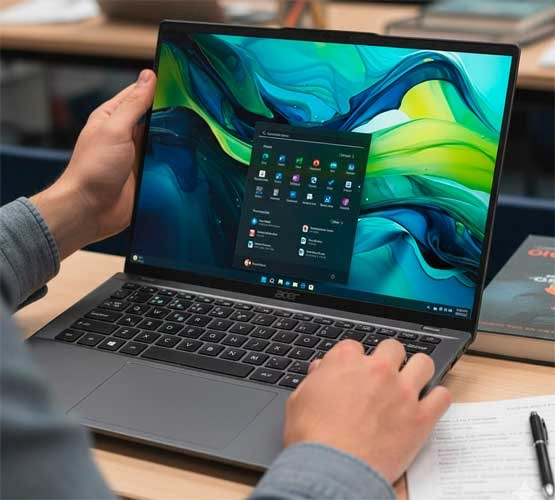
This is where many best laptops for students on a budget live:
- You can often find:
- 16 GB RAM
- 512 GB SSD
- Decent IPS or even OLED displays
- Good build quality and battery life
Students who want a solid all-rounder for 3–4 years of college should look very closely at this range.
Around $1,000: premium without going overboard
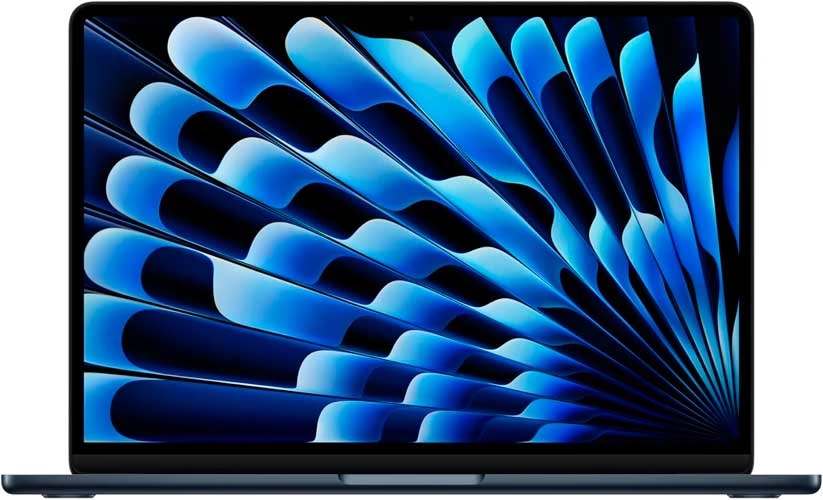
Here’s where:
- MacBook Air (M2/M3) often appears on sale
- Premium ultrabooks with metal chassis, excellent screens, and long battery life become common
If you can stretch your budget here, you usually get:
- Better thermals and performance under sustained load
- More comfortable keyboards and trackpads
- Better service and support networks
7. Where to find help: free laptops and student loans
The price of tech is a real barrier for many families. Besides hunting for deals, it’s worth knowing that in many places you can get direct assistance.
Free laptops for homeschool students
In some regions, you can find free laptops for homeschool students through:
- Local school districts or education boards: Some extend device programs to homeschoolers who register with them.
- Nonprofits and charities: Organizations refurbish used business laptops and donate them to students in need.
- Manufacturer & ISP initiatives: Certain programs bundle laptops or Chromebooks with internet subsidies for low-income families.
A practical approach:
- Search for:
"[your city/region] + free laptops for homeschool students""[your city/region] + refurb laptop program"
- Check official education websites for eligibility criteria (income thresholds, proof of enrollment).
- Ask local libraries, community centers, or homeschooling associations; they often know about active programs.
Laptop loan for students by government
Many countries and regions run some form of laptop loan for students by government, either as:
- Direct device lending (you return the laptop after finishing your studies), or
- Low-interest loans specifically for education equipment.
Typical steps:
- Confirm eligibility
- You’ll usually need to be a full-time or part-time student in an accredited program.
- Some schemes are income-tested.
- Prepare documentation
- Government-issued ID
- Proof of enrollment (acceptance letter, student ID, or certificate of study)
- Income statements or financial aid documentation
- Apply via official portals
- Look on government education/ministry or local council websites.
- Ask your university’s financial aid or IT services office — many partner with government or regional schemes.
- Compare with other options
- Manufacturer student financing (Apple, Dell, HP, Lenovo often have 0% or low-interest plans).
- University-run laptop loan pools (short-term loans for a semester or a year).
Always check total cost, interest, and what happens if the laptop is lost or damaged.
8. Quick FAQ: common doubts about laptops for students
How much RAM and storage do I really need?
- Most students:
- 16 GB RAM
- 512 GB SSD
- CS, engineering, design:
- 32 GB RAM recommended if you run heavy VMs, containers, or big Adobe/CAD projects
- 1 TB SSD helpful for large project files
Is a Chromebook enough for my major?
A Chromebook is usually enough if you:
- Do writing, research, slides, and spreadsheets
- Live inside Google Workspace or Microsoft 365 web apps
- Attend video calls and watch lectures
You’ll probably need Windows or macOS, or access to campus labs, if:
- You use CAD tools
- You do heavy desktop programming with specific IDEs or toolchains only available on Windows/macOS
- You need proprietary lab software that doesn’t run in a browser
Can I upgrade my laptop later?
- Many thin-and-light laptops have soldered RAM — you can’t upgrade it later.
- SSDs are more often upgradeable, but not always.
Before buying, check:
- The official spec sheet or manufacturer support page
- Reviews that specifically mention upgradability
If long-term flexibility matters, favor laptops that let you swap the SSD and (ideally) the RAM.
9. Final checklist before you buy
When comparing laptops for students, use this quick mental checklist:
- Does it match my usage?
- Note taking / remote learning / CS / design / mixed use.
- Specs
- CPU: recent Intel/AMD or Apple M-series.
- RAM: 16 GB or more.
- Storage: 512 GB SSD recommended.
- Portability
- 13–14″, under 1.4 kg if you commute daily.
- Battery
- Real-world 10+ hours for a full day of classes.
- Connectivity
- 1080p webcam (ideal), good mics, Wi-Fi 6/6E, at least two USB-C ports.
- Budget & support
- Check student discounts, best laptops for students on a budget guides, and local laptop loan for students by government or free laptops for homeschool students programs.
- Make sure service centers and warranty support are easy to access where you live.
If you stick to that framework, a light 13–14″ machine with 16 GB RAM, solid battery, and a comfortable keyboard will cover most students for years. From there, only step up to more power if your degree’s software truly needs it.
